Do you have a question about the Sony STR-AZ1000ES and is the answer not in the manual?
Details on the receiver's front panel, rear panel, and display indicators.
Information about the remote control and its zone operation capabilities.
Covers video signals, formats, connections, and speaker installation.
Instructions for connecting speaker cables correctly to terminals.
Guidance on connecting subwoofers and various speaker system configurations.
Connecting TVs via HDMI, including eARC/ARC and non-eARC/ARC scenarios.
Connecting TVs using analog audio/video jacks.
Configuring TV audio output for eARC/ARC and other connection types.
Connecting AV devices using HDMI jacks for video and audio.
Connecting USB devices and the FM wire antenna (aerial).
Instructions for wired LAN, wireless LAN, and network service integration.
Using AirPlay and Home Network for wireless audio playback.
Playing music content from Sonos devices.
Inserting batteries and assembling the calibration microphone stand.
Steps for turning on the unit and performing the initial Easy Setup.
Guidance on playing content from USB devices and AV devices.
Instructions for listening to FM radio, tuning stations, and saving presets.
How to pair devices and enjoy audio content via BLUETOOTH.
Listening to sound from the unit via BLUETOOTH headphones/speakers.
Connecting to services like Chromecast, Spotify, and using Sony | Music Center.
Enjoying audio from iOS devices via AirPlay and PC via home network.
Playing music content from Sonos devices.
Enjoying video and sound in a second location (Zone 2).
Listening to music or sound in a third location (Zone 3).
Activating and using the 360 Spatial Sound Mapping function for immersive audio.
Choosing different sound field modes for various audio experiences.
Operating the unit in conjunction with a TV via HDMI and BRAVIA Sync.
Switching HDMI video outputs and managing video settings like PIP/PBP.
Saving, recalling, and managing unit settings and custom presets.
Performing initial setup and customizing input assignments and modes.
Setting up speaker patterns, performing auto calibration, and adjusting speaker levels.
Configuring network connections, Bluetooth modes, and playback quality.
Adjusting system display, software updates, and installation-related settings.
Changing input names and icons displayed on the menu.
Assigning digital audio jacks and setting input modes.
Switching, checking, and performing Auto Calibration for speaker configurations.
Configuring wireless speaker connection modes, linking, and quality.
Adjusting the volume level and size for individual speakers.
Setting speaker distances from listening position/screen and adjusting speaker heights.
Setting crossover frequencies and assigning wireless speakers.
Configuring wired and wireless LAN connections for internet access.
Checking network status and managing software updates.
Setting privacy preferences and naming the unit.
Upscaling video to 4K/8K and controlling HDMI output modes.
Interlocking with TVs via Control for HDMI and managing standby functions.
Enabling eARC/ARC and setting HDMI audio output.
Enjoying 360 Spatial Sound and selecting various sound fields.
Calibrating speaker positions and enabling direct DSD signal playback.
Using Pure Direct, DTS:X Dialog Control for enhanced audio.
Steps for setting up and configuring Zone 2 and Zone 3 operations.
Enjoying audio in different zones and adjusting volume controls.
Selecting Bluetooth mode and managing paired devices.
Adjusting Bluetooth connection quality and sound quality for playback.
Setting menu language and controlling on-screen information display.
Managing network/Bluetooth standby, auto standby, and FM tuner settings.
Assigning a name to the unit and checking software/license details.
Displaying test screens and locking unit settings to prevent accidental changes.
Saving/loading setup data and updating unit software.
Procedure for reverting the unit to its factory default settings.
Initial steps to take if the unit does not operate properly.
Addressing error codes, display issues, and image problems.
Troubleshooting sound output, noise, and network connection problems.
Details on the receiver's front panel, rear panel, and display indicators.
Information about the remote control and its zone operation capabilities.
Covers video signals, formats, connections, and speaker installation.
Instructions for connecting speaker cables correctly to terminals.
Guidance on connecting subwoofers and various speaker system configurations.
Connecting TVs via HDMI, including eARC/ARC and non-eARC/ARC scenarios.
Connecting TVs using analog audio/video jacks.
Configuring TV audio output for eARC/ARC and other connection types.
Connecting AV devices using HDMI jacks for video and audio.
Connecting USB devices and the FM wire antenna (aerial).
Instructions for wired LAN, wireless LAN, and network service integration.
Using AirPlay and Home Network for wireless audio playback.
Playing music content from Sonos devices.
Inserting batteries and assembling the calibration microphone stand.
Steps for turning on the unit and performing the initial Easy Setup.
Guidance on playing content from USB devices and AV devices.
Instructions for listening to FM radio, tuning stations, and saving presets.
How to pair devices and enjoy audio content via BLUETOOTH.
Listening to sound from the unit via BLUETOOTH headphones/speakers.
Connecting to services like Chromecast, Spotify, and using Sony | Music Center.
Enjoying audio from iOS devices via AirPlay and PC via home network.
Playing music content from Sonos devices.
Enjoying video and sound in a second location (Zone 2).
Listening to music or sound in a third location (Zone 3).
Activating and using the 360 Spatial Sound Mapping function for immersive audio.
Choosing different sound field modes for various audio experiences.
Operating the unit in conjunction with a TV via HDMI and BRAVIA Sync.
Switching HDMI video outputs and managing video settings like PIP/PBP.
Saving, recalling, and managing unit settings and custom presets.
Performing initial setup and customizing input assignments and modes.
Setting up speaker patterns, performing auto calibration, and adjusting speaker levels.
Configuring network connections, Bluetooth modes, and playback quality.
Adjusting system display, software updates, and installation-related settings.
Changing input names and icons displayed on the menu.
Assigning digital audio jacks and setting input modes.
Switching, checking, and performing Auto Calibration for speaker configurations.
Configuring wireless speaker connection modes, linking, and quality.
Adjusting the volume level and size for individual speakers.
Setting speaker distances from listening position/screen and adjusting speaker heights.
Setting crossover frequencies and assigning wireless speakers.
Configuring wired and wireless LAN connections for internet access.
Checking network status and managing software updates.
Setting privacy preferences and naming the unit.
Upscaling video to 4K/8K and controlling HDMI output modes.
Interlocking with TVs via Control for HDMI and managing standby functions.
Enabling eARC/ARC and setting HDMI audio output.
Enjoying 360 Spatial Sound and selecting various sound fields.
Calibrating speaker positions and enabling direct DSD signal playback.
Using Pure Direct, DTS:X Dialog Control for enhanced audio.
Steps for setting up and configuring Zone 2 and Zone 3 operations.
Enjoying audio in different zones and adjusting volume controls.
Selecting Bluetooth mode and managing paired devices.
Adjusting Bluetooth connection quality and sound quality for playback.
Setting menu language and controlling on-screen information display.
Managing network/Bluetooth standby, auto standby, and FM tuner settings.
Assigning a name to the unit and checking software/license details.
Displaying test screens and locking unit settings to prevent accidental changes.
Saving/loading setup data and updating unit software.
Procedure for reverting the unit to its factory default settings.
Initial steps to take if the unit does not operate properly.
Addressing error codes, display issues, and image problems.
Troubleshooting sound output, noise, and network connection problems.
| Channels | 7.2 |
|---|---|
| Dolby Atmos | Yes |
| DTS:X | Yes |
| IMAX Enhanced | Yes |
| 4K/120Hz | Yes |
| 8K/60Hz | Yes |
| eARC | Yes |
| Input Sensitivity | 200 mV |
| HDMI Inputs | 6 |
| HDMI Outputs | 2 |
| HDR Support | HDR10, HLG, Dolby Vision |
| Auto Calibration | Yes |
| Wi-Fi | Yes |
| Bluetooth | Yes |
| Streaming Services | Spotify |
| Frequency Response | 10Hz-100kHz |
| Total Harmonic Distortion | 0.09% |
| Inputs | HDMI, Optical, Coaxial, Analog, USB |
| Outputs | HDMI, Speaker, Subwoofer, Headphone |
| Supported Audio Formats | Dolby Atmos, DTS:X, LPCM |
| Weight | 10.3 kg (22.7 lbs) |

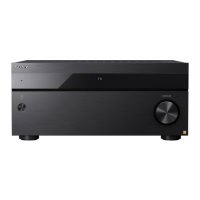



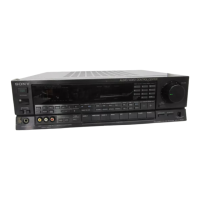

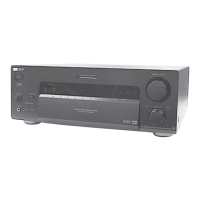
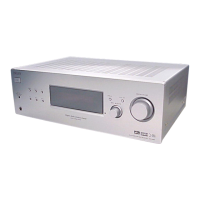
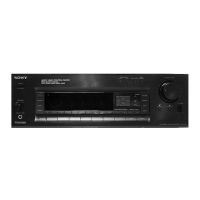

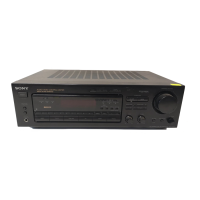
